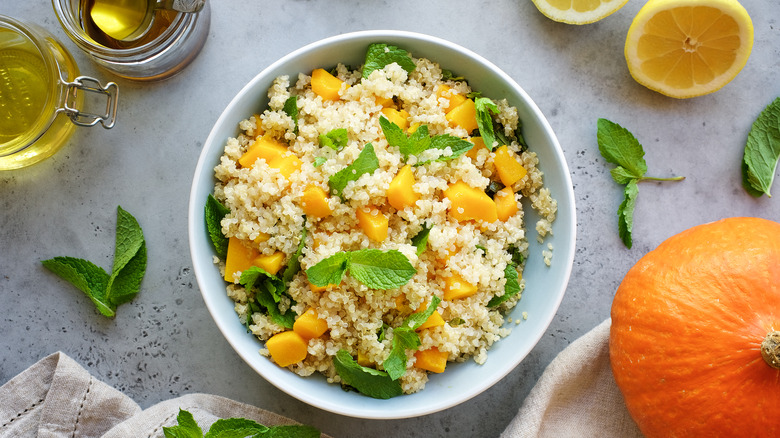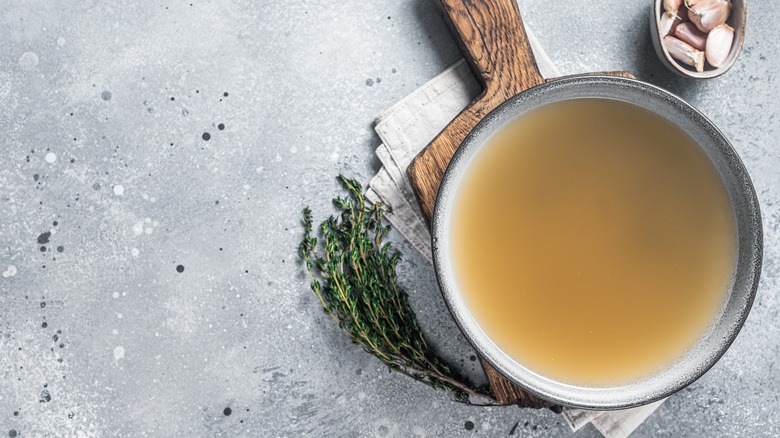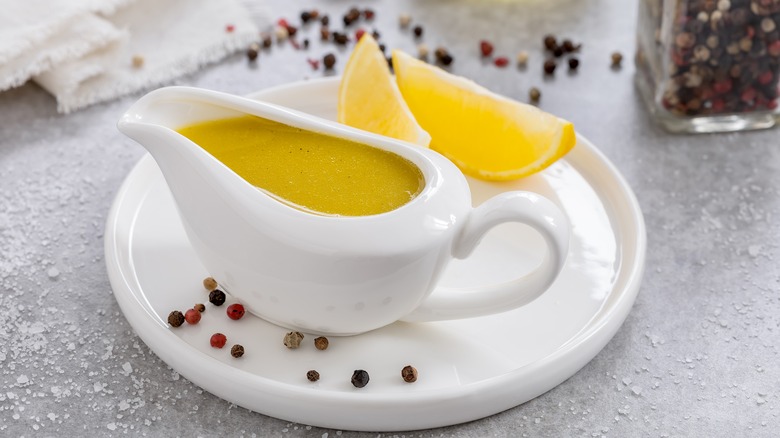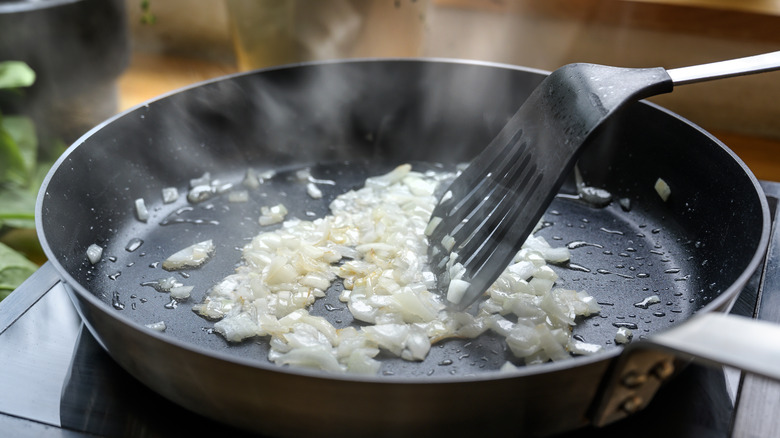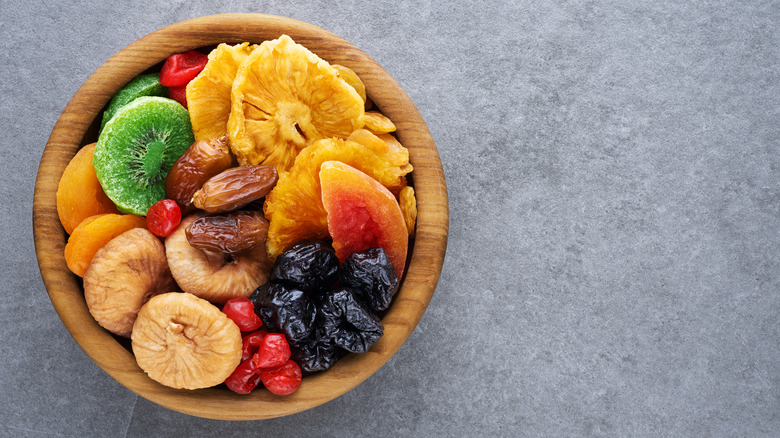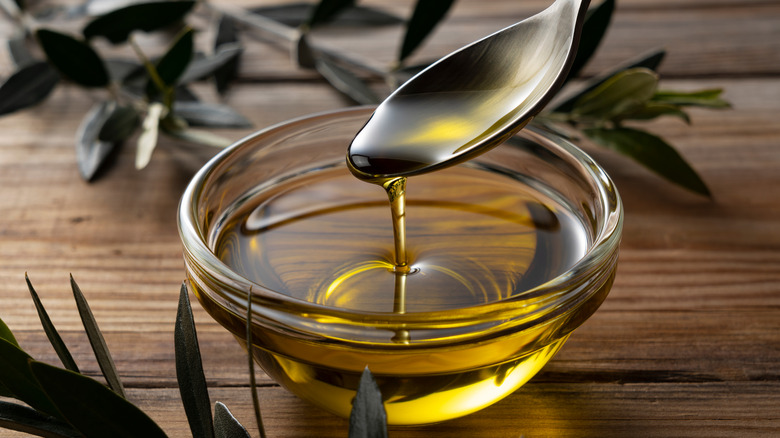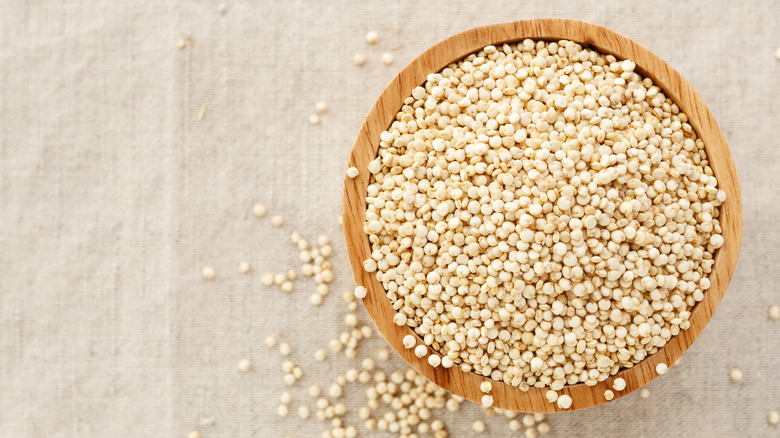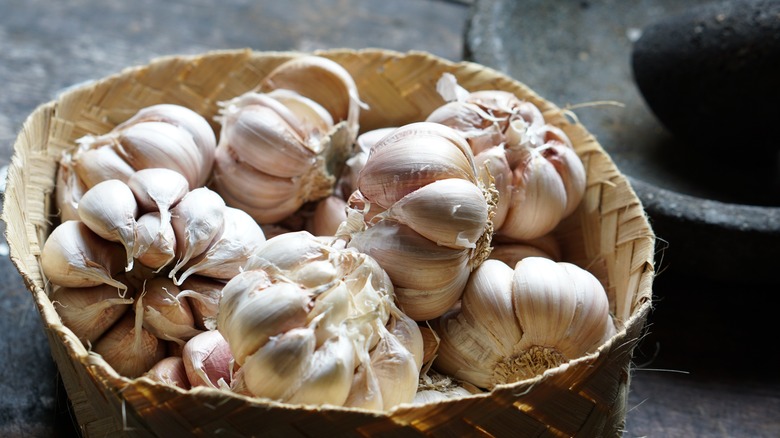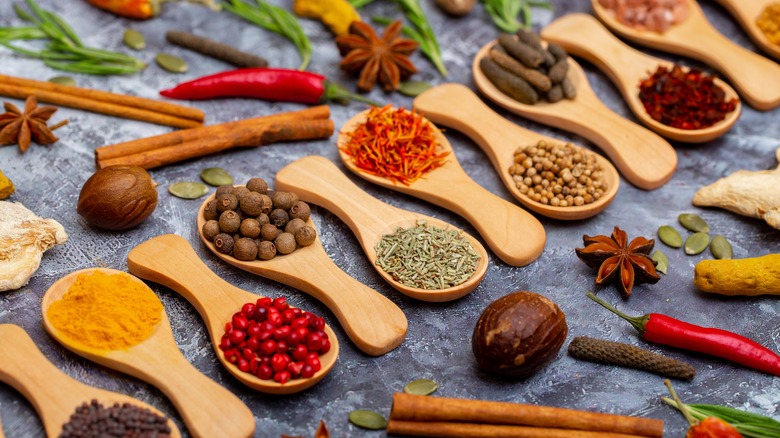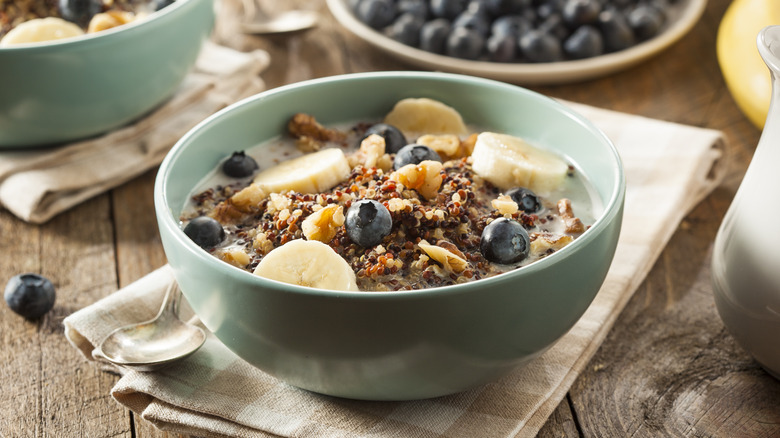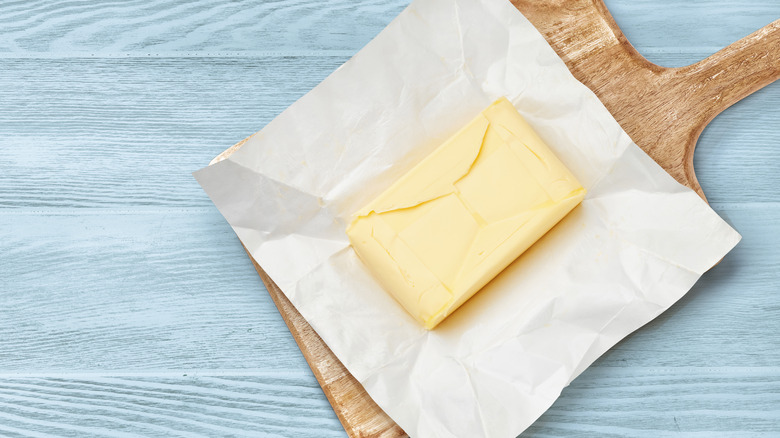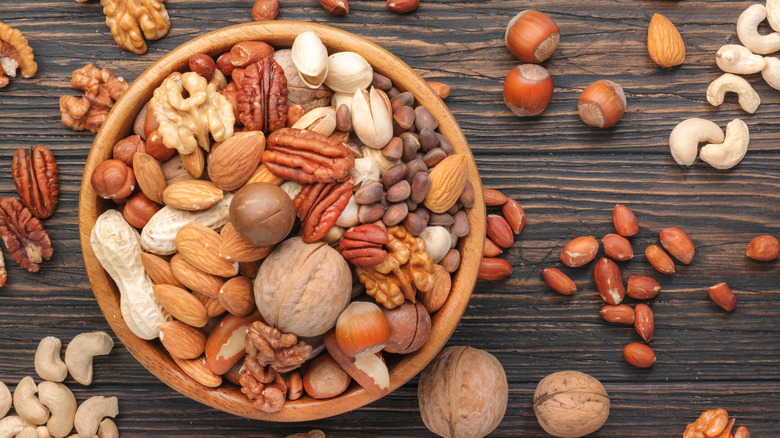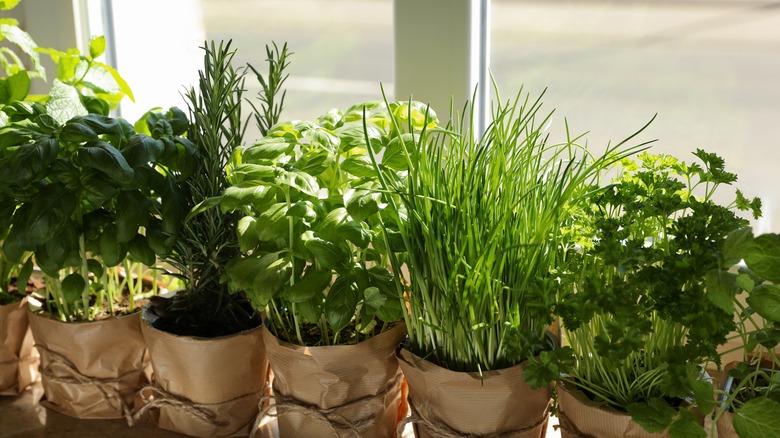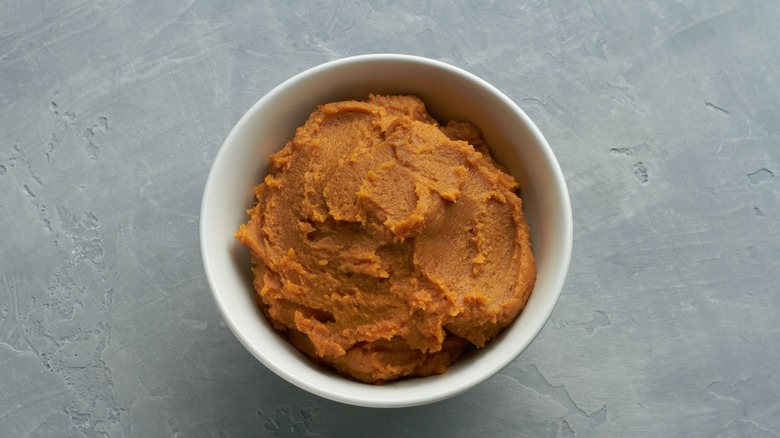13 Ways To Add More Flavor To Quinoa
There's a growing interest in ancient grains in the United States, and we couldn't be more thrilled. They add nutrient and flavor diversity to our lives, as well as keep us on our toes for new recipe possibilities. No longer do we have to rely on rice to lead the charge in the grain department. And for many gluten-free folks and health-conscious individuals, the easy accessibility to these ancient whole grains is a lifesaver. Cooked quinoa carries its own flavor, being nutty, bitter, and slightly earthy. However, those mild notes can be enhanced, and flavored using a variety of methods. If you're ready to get your quinoa game on, experiment with all the ways to add more flavor to quinoa.
A little-known fact about quinoa is that it's actually not a grain at all. It's a seed masquerading as a grain, as it is typically used in the same capacity. When it's cooked, you can see the small germ of the seed starting to sprout, which gives it a little tail. This is how you know the seed has been cooked thoroughly, but you can also enjoy quinoa raw. During the cooking process, and when selecting pairings for quinoa, go ahead and treat it like a grain. This will help you decide how to flavor it, and how to go about incorporating it into your dishes.
1. Cook it in broth instead of water
When flavoring a grain, one of the simplest ways to go about it is by using something other than water to cook it in. Think of grains like you would risotto — they are going to soak up whatever you have them cooking in. That being said, choose your flavors wisely and avoid simply cooking your quinoa in water. A great alternative is to use broth. Bone broths have been increasing in popularity because of their alleged health benefits and of course, depth of flavor. You can also make a quick and easy vegetable broth using scraps from your cooking. If you choose to start from scratch, follow some top tips you need when making homemade broth. Otherwise, feel free to pick up a can, jar, or carton from the grocery store.
Keep in mind that broth is generally high in sodium, so when choosing additional seasonings, add salt sparingly. You can also opt to use a 1-to-1 ratio of broth and water to create a more subtle flavor, or even mix canned tomatoes or tomato sauce with water to create a rich umami broth. Quinoa cooked in broth can be used in any savory dish from salads, to stuffed meats or vegetables. It's a great option if you're trying to make a flavorful bed of grains for your superstar entree, because like a grain, quinoa can help to soak up and carry sauces that drip down.
2. Dress it with a vinaigrette
Although you might not be comfortable mixing your cooked rice with a salad dressing, quinoa is a little bit different. Because it's slightly crunchier, smaller, and often enjoyed cold, it carries sauce in an entirely different way. In addition, rice mixed with dressing may continue to absorb the liquid and become mushy, while quinoa stays nice and tenderly crunchy. Because of this, consider mixing your cooked quinoa with dressing before serving it.
If you choose to dress it with an oil and vinegar-based dressing, you can add it when the quinoa is still hot to allow it to absorb some of the sauce. In addition, use this updated vinaigrette formula, because it will take your quinoa and salad to the next level with an additional punch of flavor. For a creamy dressing like ranch or blue cheese, mix it in after the quinoa has had a chance to cool, to allow the dressing to preserve its consistency. If you're looking to lightly flavor the quinoa, use just a tablespoon or two of vinaigrette per several cups of cooked quinoa. This works well when it's used as a bed of grains for a vegetable or protein. If you're adding the quinoa to a salad as a flavor bomb, you can certainly be more generous when it comes to dousing on the sauce.
3. Mix cooked quinoa with caramelized onions
A surefire way to give just about any dish depth and a subtle sweetness is by mixing in caramelized onions. Their rich and buttery flavor and texture can elevate anything from pizza to salad, so it's no wonder that it makes quite an impact when mixed with grains. You'll want to prepare the onions and grains in separate pans, as the onions have a specific cooking process that gives them their unique flavoring. For foolproof caramelized onions use vegetable broth, oil, and salt. Slow-cook the onions in broth and let the liquid cook off. Just as the onions are beginning to stick to the pan, deglaze it with more broth. Continue this until the onions are sweet and tender as can be. If you'd like to add butter, do it towards the end of the cooking process so it doesn't burn.
In a separate pan, cook your quinoa in either salted water or broth. Once the quinoa is done cooking, and all of the liquid has been absorbed, let it rest for a few minutes before mixing in your onions. Consider using diced onions instead of rings or half moons for a more even distribution of flavor. Enjoy subtly sweet, rich, and buttery quinoa as a side dish, or mixed into your recipe.
4. Infuse it with dried fruit and fruit scraps
The sweet and savory combination of flavors tantalizes our tastebuds. It creates a pleasing contrast that adds complexity and intrigue to recipes and can be applied to almost any savory or sweet dish. Drizzle hot honey over your fried chicken, include roasted figs and balsamic reduction on your pizza, or garnish your chocolate cupcake with candied bacon. The same goes for quinoa, which is neutral and can be enjoyed in both a sweet and savory capacity like most seeds and grains.
By far one of the best ways to use food scraps and dried fruit is to add them to your cooking quinoa. Consider adding citrus rinds to your quinoa that will act as a bed for roasted poultry. Include dried cranberries or raisins, along with almond slivers when creating a flavorful quinoa addition to a fall-time kale salad. Apple peels can be used to give quinoa a subtle fruity undertone which can create sweetness when it's used as a breakfast cereal. Even try cooking it with dried fruit as intense as prunes to make the ultimate side dish for gamey meats and robust vegetables. You can choose to leave dried fruit in the finished dish or remove them like you would the fruit scraps.
5. Add oil and salt to cooked quinoa
It's nice to appreciate all the natural flavor that comes with quinoa by enhancing it instead of masking it. A great way to enhance any meat, fish, fruit, vegetable, or grain is by incorporating just a little bit of salt. This, of course, is a no-brainer but is worth noting because salt added during and after the cooking process can go a long way. In addition, when paired with the proper oils, both the flavor and mouthfeel of grain can become unstoppable. Olive oil is a top pick when it comes to selecting oils with rich flavoring. Extra virgin olive oil in particular has fruity and floral undertones, but each brand will have unique differing subtleties. Recognize the tips you need when cooking with different types of olive oil, like which ones make for an exceptionally flavorful finishing oil versus which ones are best for cooking. While you can certainly add salt and olive oil during the quinoa cooking process, consider garnishing your grain after it's come off the stovetop.
If you have stuck solely to olive oil your entire life, consider venturing a different path. For instance, walnut oil has a meaty, sweet, and nutty flavor. This makes for an incredible garnish for grains, as well as a flavorful and unique salad dressing, which is why you should always have walnut oil in your panty. If you're creating a sweet or tropical dish, consider using coconut oil.
6. Toast uncooked quinoa
What makes quinoa unique is that it can be enjoyed not only cooked but also raw. This is due to the fact that although we keep referring to it as a grain, it is technically a seed. You may notice toasted quinoa garnishing baked goods or bread, and you may even find quinoa flour as an ingredient in gluten-free pizza crusts and pancakes. Toasted quinoa is popular not only for its nutty flavor but also for its poppy crunch. It's almost the texture of an extra crunchy puffed grain, but firmer and slightly more powdery once chewed. You should even consider toasting quinoa before you cook it because it helps to bring out the natural nutty flavors.
Toasted raw quinoa can make for an incredible crunchy addition to your summer salads, as well as a way to add textural diversity to just about any dish. It pairs particularly well with vegetables, as they tend to carry few crispy notes unless fried or breaded. Individuals that cannot eat gluten can use toasted quinoa as a breadcrumb alternative, as it can be pulsed after toasting to create a similar texture.
7. Don't skimp on the garlic
There's no way we could list all the ways to add more flavor to quinoa and not bring up the flavor king: garlic. When cooking with garlic, the options are extensive, but as long as you're using a proper cooking method then it's really up to you how you'd like to encourage it into your quinoa. Perhaps the easiest way is to add garlic powder or granulated garlic to your quinoa water or mix it in after the quinoa is fully cooked. For a stronger flavor, lightly saute garlic in olive oil until it's fragrant, and mix it into cooked quinoa after it's had a chance to rest.
If you're garlic fantastic then you've no doubt roasted whole heads of garlic in your oven before. Do this by slicing off the top of the head to expose the bulbs, but leave the skin on. Drench it in olive oil and wrap it in tin foil and bake until the cloves are tender and soft. After the head has cooled, use your hand to squeeze the bulbs out, and from there they can be lightly stirred to create a paste. Add a little salt or salted butter, and mix it thoroughly with your cooked quinoa.
8. Season your water with spices
A foolproof way to give any grain a punch of flavor is to season its cooking water. And unless you were raised with only a salt and pepper shaker in your kitchen, then you know how extensive your options can be in the spice department. For a sweet quinoa dish, choose cinnamon or nutmeg. For a spicy dish add red pepper flakes or cayenne.
If you're unsure where to start, read up on a few tips you need when cooking with spices, and pick a region of the world that you want your dish to reflect. Use your culinary knowledge, or the internet to help guide you from there. For instance, if you're pairing your quinoa side dish with a Mediterranean salmon recipe, consider using paprika, black pepper, and garlic powder. If paired with fajitas, consider Mexican spices like chili powder, cumin, and coriander. After the quinoa has absorbed the seasoned water, feel free to add additional spices, along with citrus to enhance the flavors.
9. Turn it into porridge
There's something you need to know about quinoa that we've been holding out on you. It's often eaten as a cereal grain. The ancient Incans used quinoa as a breakfast food to help sustain them as they worked. In fact, quinoa can be used in both sweet and savory dishes, cooked, raw, or ground and used as flour. If you enjoy hot cereal, then it's about time you front-loaded your day with a hearty, protein-packed bowl of cooked quinoa. To make the richest, creamiest quinoa around you can opt to cook your grains in milk, or non-dairy milk, like you might with oatmeal or buckwheat.
In addition, don't forget to add vanilla or almond extract, maple syrup, cinnamon, and dried fruits like dates and raisins. Slivered almonds, walnuts, ground flaxseed, hemp seeds, and chia seeds can all help to add texture to the pot. Include just a tiny bit of salt, butter, or plant-based butter to really help your quinoa porridge really shine. Enjoy this unique way to eat quinoa, and let it set the tone for the rest of your day.
10. Melt in butter after it's cooked
Quinoa is crunchy, grainy, and hearty, but we wouldn't necessarily categorize it as creamy. Grits, buckwheat, polenta, and oatmeal are able to reach a point where they go from chewy to creamy, but quinoa doesn't have that same starchy quality. In order to achieve that creamy mouthfeel, or add a little contrast to the cooked seed, consider adding butter, or plant-based butter.
The fat from the butter gives quinoa a pleasing mouthfeel, and the flavor can add richness and saltiness. When cooking with butter, it's important to be selective about which kind you're using. Salted butter works best for grains, but if you've cooked your quinoa in a salty broth then you may want to spring for the unsalted version. Vegan butters have varying flavors, so do a taste test before melting them in. Even just a small amount of butter can go a long way. Be sure to add it in after the quinoa has had a chance to cook and rest, but before it starts to cool so that it can melt and distribute evenly.
11. Add nuts and seeds to quinoa
Because quinoa is a seed, it's no surprise that it pairs beautifully with nuts and seeds. You may even find precooked quinoa in the grocery store that has flax or chia seeds cooked along with it. Toasted almond slivers, chopped walnuts, and crumbled pecans can all add depth, richness, and subtle flavor, as well as texture to the ancient grain.
There are many seeds you should be cooking with, but unfortunately, most of them get overlooked by home cooks. Up your culinary game by expanding your horizons and including them more often in cooked grains. Diversity of texture is something that top chefs never fail to include but can go easily overlooked at an amateur level. And when it comes to utilizing nuts to their full potential, there are plenty of ways to enhance their natural flavor. Toasting nuts is key, but the simple ingredient to amplify the flavor of any nut is the nut's own oil. Toast almonds in almond oil, walnuts in walnut oil, and peanuts in peanut oil for the most delectable flavor. Mix toasted seeds and nuts into cooked quinoa to help enhance its natural flavors, and add texture diversity and richness.
12. Garnish it with fresh herbs
A simple way that top cooks add flavor and an aesthetic appeal to just about any dish, is by garnishing it with fresh herbs. And we aren't talking about that obligatory curly parsley spring that accompanies just about every dish at your local diner. We're talking about fresh herbs with intention. Especially if you plan to chill your quinoa before serving it or are adding it to a salad, consider using fresh herbs to infuse it with flavor.
For a grassy and refreshing citrus flavor, mince fresh cilantro to stir into the cooked grain. Flat Italian parsley is more flavorful and tender than curly parsley and pairs well with a large variety of cuisines. Fresh basil can be used as a sweet and citrusy addition and complements additions like garlic and lemon juice well. If you don't often work with fresh herbs, brush up on the most common types of herbs and how to use them. Once you've minced and incorporated your herb, reserve a full sprig to add to the top of your dish as a beautiful garnish. When you can, use fresh herbs, but dried herbs can be cooked into the quinoa as well.
13. Mix miso to your boiling water
Of the five basic tastes, umami is perhaps the most difficult to describe. It's considered to be incredibly savory and can be found in a variety of foods including seaweed, mushrooms, broth, and cooked tomatoes. Miso holds a strong umami flavor and is also quite salty. It's often overlooked in Western cuisine but can add incredible depth and richness to common foods such as soups, mashed potatoes, and sauces. Miso is made from fermented beans and grains and comes refrigerated as a thick paste. There are different types of miso and varying ways to use them, but for those just picking up your first jar, start with shiro miso, the most common of them all.
Because miso is powerfully salty, add just a small amount to your quinoa water like you might with a bouillon paste. Let it dissolve in the quinoas cooking water as the grain absorbs the liquid. Do a taste test after the quinoa is fully cooked, and if you plan on adding more be sure that you stir it in without leaving any clumps. Because miso is of Japanese origins, consider pairing it with other Asian aromatics like ginger and garlic, or using it to accompany a Japanese recipe.
